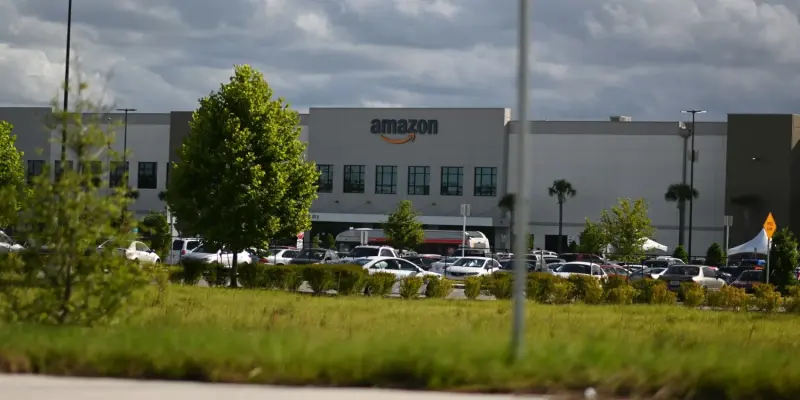The life insurance industry stands at a digital crossroads, facing significant pressure to evolve in an increasingly technology-driven landscape. With over $8.2 trillion in premiums in the life insurance and annuities market and expectations of growth to $18 trillion by 2034, the sector embodies a ripe opportunity for major technological upheaval. A core issue is the persistent reliance on antiquated systems, manual processes, and a human agent-driven distribution model. With the inefficiencies translating to substantial global annual commissions, revolutionary players like Amazon, known for disrupting various markets, are eyeing these vulnerabilities.
Amazon’s Approach to Market Disruption
Historical Paths and Current Ambitions
Amazon’s strategy in various sectors has been to identify inefficiencies and introduce streamlined, customer-centric solutions. This method has redefined markets in logistics, cloud computing, and healthcare. Analysts foresee a similar strategy potentially reshaping life insurance, fueled by Amazon’s inclination for integrating advanced technologies and customer-focused innovations. With CEO Andy Jassy emphasizing the transformative influence of AI, the anticipation is that Amazon would primarily target life insurance distribution. This maneuver aligns with Amazon’s strategy of decoupling from traditional roles like insurers, instead gaining economic leverage by revolutionizing client experience and recommendation systems.
Positioning for Strategic Distribution Control
Amazon’s expertise lies in managing discovery, recommendation, and consumer engagement—areas pivotal for controlling the broader distribution mechanism within life insurance. The hypothesis is not Amazon becoming an insurer but refining product delivery and client relationships in its favor. This approach branches from Jeff Bezos’s strategy of transforming market economics by capitalizing on existing inadequacies. By bolstering their distribution networks, Amazon could redefine the way life insurance is perceived and purchased, adopting a model that ensures market control without direct risk exposure.
Implications for Traditional Life Insurance Companies
Challenges Facing Incumbent Carriers
The potential for Amazon to disrupt necessitates an urgent reassessment by life insurance firms of their distribution models, which remain aligned with pre-digital practices. Traditional approaches, rooted in evolved but outdated frameworks, clash with the modern demands of platform-driven commerce. Harvard Business School’s research underscores the need for insurers to innovate their sales channels, shifting from operational support to value creators. The complexity for existing players lies in transitioning from legacy systems to more agile, technologically integrated solutions that cater to evolving consumer expectations.
Reimagining Distribution and Investment in Technology
For insurers seeking to withstand such radical shifts, embracing disruption rather than merely digitizing old processes is vital. The need is for comprehensive retooling of distribution as a strategic, proactive asset. Companies like AEGON’s World Financial Group face particular risks from more nimble competitors employing AI to meet regulatory requirements while enhancing efficiency and compliance. The opportunity is not just in safeguarding existing models but seizing the chance to reset business strategies. By treating the technology evolution as a holistic transformation rather than a superficial upgrade, life insurance carriers can better position themselves against potential market entrants like Amazon.
Strategic Shifts and Future Considerations
Preparing for an Amazon-Led Ecosystem
Speculation around Amazon entering as a managing general agent (MGA) or platform provider belies deeper strategic implications. Though initially poised to refine distribution channels, Amazon could eventually influence pricing models and product designs. For insurers, the key defense isn’t passive adaptation but active reformation of their business ecosystems. This includes reassessing value chains, harnessing data insights, and strengthening client loyalty. As Amazon gains a foothold in distribution, traditional carriers must decide whether to partner, compete directly, or find unique ways to coexist within this transformed landscape.
The Role of AI and Consumer-Centric Models
Generative AI plays a critical role in how future life insurance products are developed and serviced. By enhancing consumer interaction models, insurers can revolutionize their offerings to meet increasingly personalized demands. Amazon’s expertise could accelerate this shift, introducing AI-driven underwriting, claim processing, and customer service improvements. Broadly adapting such technologies will be pivotal for traditional firms hoping to remain competitive. They must also consider how to protect their proprietary data, a valuable resource that, if controlled by distribution leaders like Amazon, could redefine industry margins and consumer dynamics.
Conclusion: Navigating the Transformative Tide
The life insurance industry is at a pivotal moment, facing immense pressure to adapt in a technology-driven world. With life insurance and annuities markets generating over $8.2 trillion in premiums and expected to grow to $18 trillion by 2034, the sector presents vast potential for technological transformation. A key challenge is the continued reliance on outdated systems and manual processes, along with a distribution model heavily reliant on human agents. These inefficiencies lead to significant global annual commission costs, catching the attention of innovative companies like Amazon, which is renowned for disrupting and transforming industries. As these tech giants eye the industry’s vulnerabilities, there is an increasing urgency for traditional players to modernize. By embracing technology, they can streamline operations, reduce costs, and enhance customer experiences. The shift toward digital solutions can reshape the market, paving the way for new efficiencies and growth opportunities in a rapidly advancing technological landscape.

